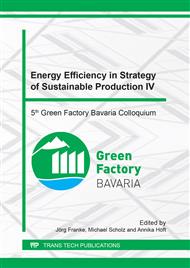p.90
p.96
p.111
p.119
p.127
p.135
p.142
p.154
p.162
Qualification of Direct Diode Lasers for Laser Beam Welding in Order to Enhance Process Efficiency
Abstract:
Laser beam welding has become an established joining technique in automotive manufacturing. Common solid-state lasers generate high-quality joints, but they provide low energy efficiency. By contrast, direct diode lasers (DDL) have superior energy efficiency, are cheaper to purchase and additionally require less utility space. To examine the overall performance of direct diode lasers in comparison to disk lasers, welding quality and energy consumption of the two lasers have to be evaluated. Additionally, for this contribution the stability of the DDL’s beam, like temporal variation of focus position and beam shape, is examined. It is found that a focus shift takes place for longer periods of emission, but the variation of the focus diameter in the initial focal plane is negligible. As expected, the direct diode laser consumes less energy than the disk laser for the same output power. Welding experiments are conducted using four different steel alloys that are exemplary for engineering materials used in automotive manufacturing. Metallographic analysis shows that weld seam depths and widths are on average larger using the disk laser. However even with the need for higher output powers to achieve equal seam geometries the DDL consumes less energy and thereby causes less costs.
Info:
Periodical:
Pages:
127-134
Citation:
Online since:
July 2018
Authors:
Price:
Сopyright:
© 2018 Trans Tech Publications Ltd. All Rights Reserved
Share:
Citation:


